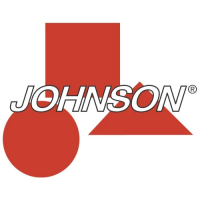900590-UIM-B-0613
4
SECTION V: CONDENSATE DRAIN
CONNECTIONS
All drain lines should be pitched away from unit drain pan and should be
no smaller than the coil drain connection.
Route the drain line so that it doesn’t interfere with accessibility to the
coil, furnace, air handling system or filter and will not be exposed to
freezing temperatures.
Instruct the owner that the evaporator coil drain pan should be
inspected and cleaned regularly to prevent odors and assure proper
drainage.
Coils should be installed level or pitched slightly toward the drain end.
Suggested pitch should not exceed 1/4-inch per foot of coil.
If the coil is provided with a secondary drain it should be piped to a loca-
tion that will give the occupant a visual warning that the primary drain is
clogged. If the secondary drain is not used it must be capped.
DO NOT
use Teflon
TM
tape, “pipe dope”, or other sealants. The use of a
sealant may cause damage and premature failure of the drain pan.
SECTION VI: REFRIGERANT LINE
CONNECTION
Connect lines as follows:
1. Suction and liquid line connections are made outside the cabinet.
Leave the tubing connection panel attached to the cabinet with the
tubes protruding through it. The lines are swedged to receive the
field line set tubes.
2. Wrap a water soaked rag around the coil connection tubes.
3. Remove grommets where tubes exit the cabinet to prevent burning
them during brazing.
4. Purge refrigerant lines with dry nitrogen.
5. Braze the suction and liquid lines.
6. Re-attach the grommets to the lines carefully to prevent air leak-
age.
7. Install the TXV Bulb to the suction line set, Figure 3 and wrap with
insulation.
Refer to Outdoor unit Installation Manual for evacuation, leak check and
charging instructions.
Lines should be sound isolated by using appropriate hangers or strap-
ping.
All evaporator coil connections are copper-to-copper and should be
brazed with a phosphorous-copper alloy material such as Silfos-5 or
equivalent. DO NOT use soft solder.
SECTION VII: COIL CLEANING
If the coil needs to be cleaned, it should be washed with Calgon Cal-
Clean (mix one part CalClean to ten parts water). Allow solution to
remain on coil for 30 minutes before rinsing with clean water. Solution
should not be permitted to come in contact with painted surfaces.
SECTION VIII: AIR SYSTEM ADJUSTMENT
To check the CFM, measure the static pressure drop across the coil
using a portable manometer and static pressure tips. To prepare coil for
static pressure drop measurements - the system should have been
recently operational in cooling mode.
Drill 2 holes, one 3" after the coil (before any elbows in the ductwork)
and one 3” before the coil. Insert the pressure tips and read the pres-
sure drop from the manometer. See Table 4 to determine the air flow,
and make the necessary adjustments to keep the CFM within the air
flow limitations of the coil.
When the coil is installed in an attic or above a finished ceiling, an
auxiliary drain pan must be provided under the coil as is specified by
most local building codes.
Avoid Double Trapping.
Threaded drain connections should be hand tightened, plus no more
than 1 turn.
If the coil is installed in a draw-thru application (modular air handler),
it is recommended to trap the primary and secondary drain line. If the
secondary drain line is not used, it must be capped.
Coil is under inert gas pressure. Relieve pressure from coil by
depressing schrader core.
Dry nitrogen should always be supplied through the tubing while it is
being brazed, because the temperature required is high enough to
cause oxidation of the copper unless an inert atmosphere is provided.
The flow of dry nitrogen should continue until the joint has cooled.
Always use a pressure regulator and safety valve to insure that only
low pressure dry nitrogen is introduced into the tubing. Only a small
flow is necessary to displace air and prevent oxidation.
Route the refrigerant lines to the coil in a manner that will not obstruct
service access to the coil, air handling system, furnace flue or filter.
Table 4 below has WET coil data. Run system for approximately 15
minutes in cooling mode prior to taking measurements.
TABLE 3:
Air Flow Data - Static Pressure Drop
HD Coil
Size
CFM @ Static Pressure Drop - IWG
(Based on wet coil)
0.10 0.15 0.20 0.25 0.30
24 360 560 760 960 1160
36 1025 1150 1275 1400 1525
48 1200 1367 1533 1700 1867
60 1449 1664 1879 2093 2308

